New generation diffusion probe
NM200012E
The new generation diffusion probe is a probe specialized for diffusion applications which requires a large magnetic field gradient. By improving the design around the coil, the recovery time after the field gradient pulse has been significantly shortened compared to the conventional model. This probe is best for analyses of dynamics of high molecular weight polymer solutions with a small diffusion coefficient, nuclei with a small gyromagnetic ratio, and ions in solid electrolytes, which have been actively developed in recent years.
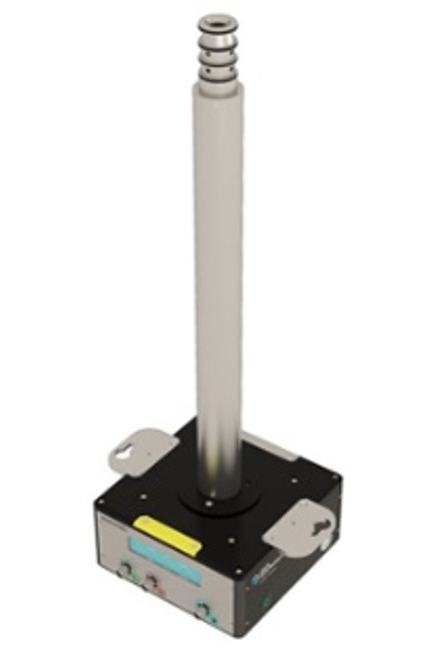
| Specification | |
|---|---|
| Maximum magnetic field gradient | 1200G/cm @ 30A 2000G/cm @ 50A |
| Sample tube diameter | 5 mm |
| Available Nuclei | 1H, 19F, (31P), 7Li, 11B to 17O,15N |
| NMR lock | 2H |
| FG polarization | Bipolar |
| VT range | -70 to 120 °C |
| Auto Tune | Available |
* Some of observable nuclei are subject to change
Analytical example 1
Li ion dynamics in polymer solid electrolytes.
The diffusion behavior of Li ions changes significantly depending on the difference in the higher-order structure of the polymer electrolyte.
From the diffusion time (Δ) dependence of the diffusion plot, the uniformity of the diffusion motion can be investigated.
Method: 7Li Stimulated Echo
Sample: Polyketone solid electrolyte (crystalline, amorphous)
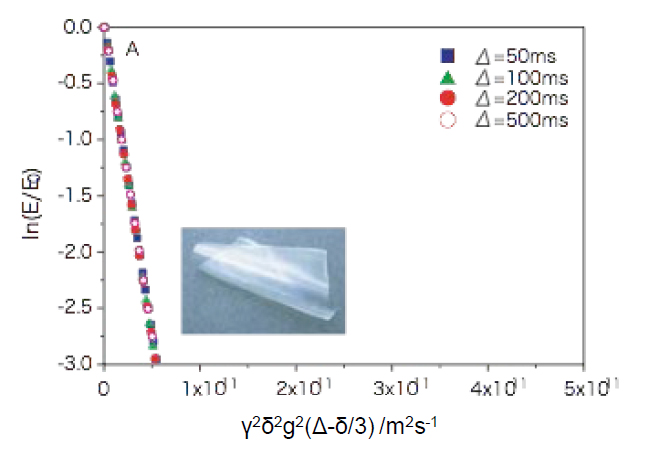
Stejskal-Tanner diffusion plot with various diffusion time
No diffusion time dependence
→ Homogeneous diffusion
Diffusion time coefficient (Δ=500ms)
DLi = 5.6 × 10-11 [m2/s]
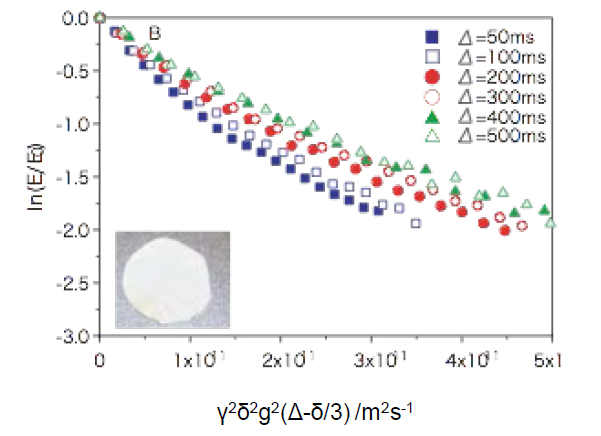
Stejskal-Tanner diffusion plot with various diffusion time
Diffusion time dependence
→ Restricted diffusion
Diffusion time coefficient (Δ=500ms)
DLi = 0.4 × 10-11 [m2/s]
Y. Hashimoto, M. Nayuki, N. Horike, and A.Yoshino, JEOL NEWS, vol.40
Courtesy of Asahi Kasei Corporation
Analytical example 2
Li ion dynamics in inorganic oxide solid electrolytes.
It is also possible to analyze the diffusion behavior of Li ions in inorganic solid electrolytes with a small diffusion coefficient. The activation energy of diffusion motion can be calculated from the temperature dependence of the diffusion coefficient.
Method: 7Li Stimulated Echo
Sample: LLTZO (Single Crystal, Powder)
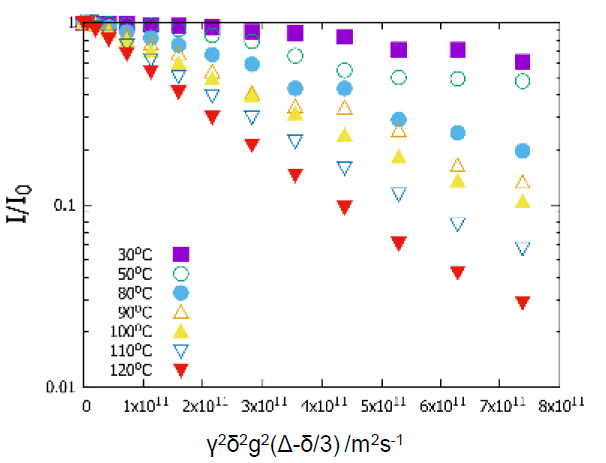
Stejskal-Tanner diffusion plot at various temperatures.
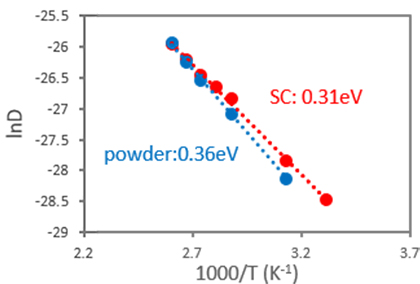
Activation energy of diffusion motion.
(An Arrhenius plot of diffusion coefficient)
Courtesy of Dr. Naoaki Kuwata (NIMS)
Dr. Junji Akimoto (AIST)
- Please see the PDF file for the additional information.
Another window opens when you click. 
PDF 495.2 KB
SEARCH APPLICATIONS
Related Products
Are you a medical professional or personnel engaged in medical care?
No
Please be reminded that these pages are not intended to provide the general public with information about the products.
